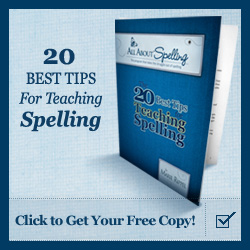But what does it mean to use multi-sensory methods and how can you incorporate it into your teaching style?
What is multi-sensory teaching?
We learn about the world through our senses. We use sight, sound, taste, touch and smell to make our discoveries.
Consider trying to learn karate through reading alone. Could you do it without someone showing you how to move your arms and legs; how to move your feet; how high to hold your hand and which direction to hold it? Even having a few pictures of poses and moves would help significantly. But with just words, it simply can't be done.
The same is true of all learning. Multi-sensory teaching is more than adding pictures to books. We need visuals as well as sounds and other elements to make us truly understand what we are trying to learn. And while a picture speaks 1,000 words, imagine what adding sound, touch, taste and smell can do. By allowing children to use multiple senses to learn, you open up the world to them.
How beneficial is multi-sensory teaching?
If all people learned the same way, public school would be much more successful and there would be no such thing as learning disabilities. The only reason learning disabilities are called disabilities is because the learning style doesn't match the teaching style used and the student has a harder time learning.
You may have heard of the visual learner or the kinesthetic (hands-on) learner. These are different learning styles. For example, a visual learner retains more of the information taught through visuals such as pictures in books or videos. When you match the teaching style to the learning style of the child, he or she gets more out of the lesson.
However studies have shown that using multiple teaching styles help children learn even more than if they were taught with just their strongest learning style. For example, a visual learner would learn better if taught visually, but would learn even more if taught through visuals, sounds and touch.*
Examples of multi-sensory teaching
 Physically planting a seed and watching it send out roots and shoots teaches children so much more than reading about how a plant grows in a book (especially for children who have dyslexia and have a hard time reading).
Physically planting a seed and watching it send out roots and shoots teaches children so much more than reading about how a plant grows in a book (especially for children who have dyslexia and have a hard time reading). Poetry is much more meaningful when read with full emotion. The inflections in your voice when reading sad parts or joyful parts are heard and understood by children.
Science is much better understood through experimenting with it. Floating raisins in soda water and watching the bubbles lift and drop them or putting salt in water to see if it will light up a bulb -- these are all things kids can do with their hands, see with their eyes and remember forever because they took part in it.
How do you incorporate multi-sensory lessons in all subjects?
Let's face it, some subjects make it easy to use multiple senses. Art and science are obvious. But what about history or government? For those subjects, you need to get creative.
In the book A Whack on the Side of the Head: How You Can Be More Creative
It gave me an idea: Famous battles or historical figures really come to life in a play. You can have your children come up with the script or just do an impromptu act. Go outside if the scene warrants it. The scenes and plays don't have to be exactly accurate as long as the main facts are established. If you don't have time to put on a play, you can always ask your child to imagine what the scenery of an event might be like or how people would feel at the time (for example, at the Gettysburg address people may have felt humbled, proud and invigorated all at the same time). You could have your child draw out the scene to make it come to life. Recite a small section of a famous speech with some vigor in your voice. These are all wonderful ways to turn static history lessons into fun, memorable ones.
Depending on the topic, there are many other ways to make a history lesson multi-sensory. There's always maps that can be incorporated into the lesson (these are great for geography lessons too). If you have blackline maps, kids can color them in, add routes, forts or geographical features.
If you are studying colonial times, you could have your children draw pictures of the kinds of clothes people of the time and area might wear or what their town might look like. Are there chickens running around in the road or horses and buggies? For the Age of Invention, you could have your child come up with a new invention, draw it up and explain what it does and how it is helpful.
With some creative thinking, any subject can be multi-sensory and fun. Math comes to life when your child has real objects to hold and use like a base ten kit, a spinner, dice, buttons, measuring spoons, a clock, or whatever helps teach the lesson at hand. Literature is more fun if you act out scenes or dress up like the characters. Government can be understood better if you set up your own home government and start writing up bills you'd like to have passed.
A little thinking and preparation ahead of time can lead to a wonderful learning experience for you and your children.
* This information is taken from the All About Spelling program. I use All About Spelling with my son not only to help him with his spelling but to help him conquer reading as well. The program uses multi-sensory methods to teach the rules and practices in spelling. Each lesson is given in an orderly fashion and helps make sense of the sometimes senseless rules in spelling. The lessons build on each other so that he never forgets a previous lesson because he's continuing to use it. The program makes learning fun and helps my son read and write better. He's constantly telling me how much better his spelling is getting and he's really proud of himself. He also has more confidence now to try to write more. The letter tiles help make reading easier for him because letters and letter combinations are separated out and put together like a puzzle. When his dyslexic mind sees the letters as puzzle pieces, they stay put when he places the pieces together. To learn more about the All About Spelling program, click here.


No comments:
Post a Comment